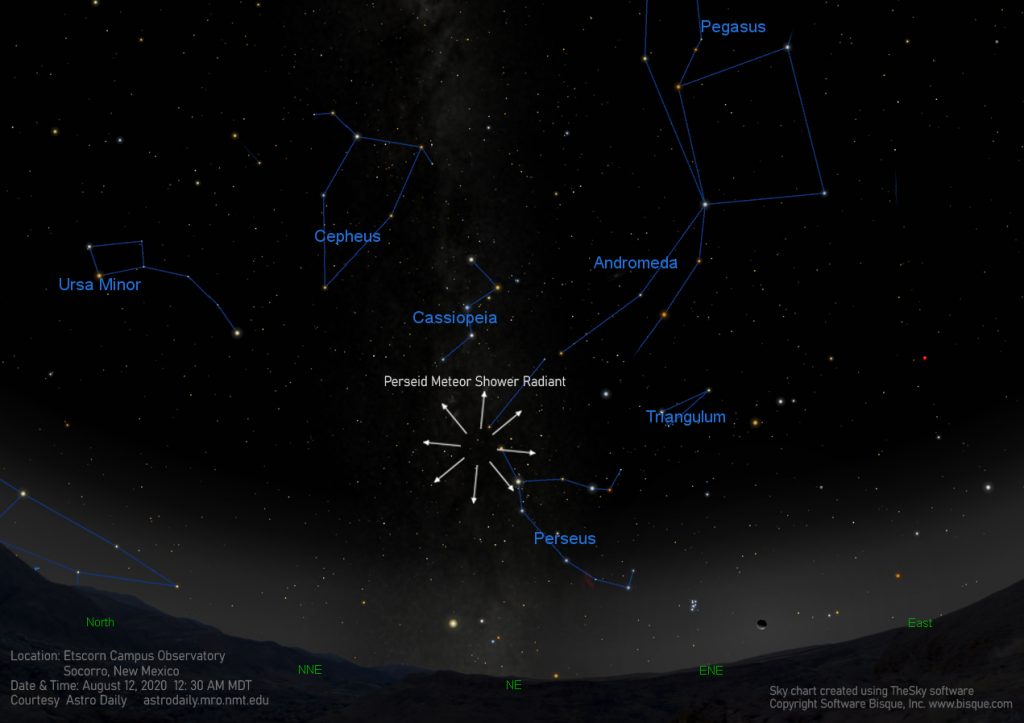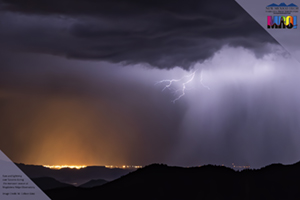Or at least observe a few…That’s right, it’s time for the annual Perseid meteor shower, whom most agree puts on the best show for those of us in the northern hemisphere. The Perseids are predicted to peak on August 11 – 12. This year the celestial light show may be somewhat subdued due to the nearly last quarter Moon rising not long after the radiant of the shower in the constellation Perseus. Many of the fainter meteors will be lost in the glare of the Moon, but one should still see plenty of bright meteors, up to 50 an hour, and maybe even a fireball or two.
An annual meteor shower is one that occurs every year over the same period of time in a well-defined area of the sky. In the case of the Perseids, the meteors appear to come from the constellation Perseus. Meteor showers are named after the constellation that the radiant appears in, the radiant being the point in the sky in which the meteors appear to originate from.

Meteors are little bits of debris (ranging in size from a grain of sand to a small pebble) left behind by comets and asteroids that strike the Earth’s atmosphere and burn up in a fiery streak of light. On any given night and depending upon your observing conditions, you can expect to see a handful of meteors coming from random directions in the sky, called sporadic meteors. Annual meteor showers occur when the Earth passes through the trail of debris left behind in the orbital path of a comet. The Perseids are from Comet Swift-Tuttle, a periodic comet that passes through our neighborhood every 133 years.
The brightness of a meteor depends both upon its size and the speed at which it passes through our atmosphere, with speeds ranging from 25,000 to 160,000 mph. Since the range of sizes of a meteor is pretty small, less than 1 to 2 grams on average, the kinetic energy the particle has due to its speed is the dominant factor in how bright it will appear. The flash we see from Earth is due to the tiny piece of debris transferring its energy to atmospheric atoms along its path as it travels through the thermosphere (the meteoric region lies about 50 to 75 miles in altitude). This long, thin column of excited atoms, the meteor trail, is usually less than several feet in diameter but can be dozens of miles long.

The best time to look for Perseids is after midnight into the early morning hours of Wednesday, August 12. The sky map above shows the location of the radiant at 1:00 AM MDT for our location here in Socorro, New Mexico. Not a night owl? No problem! You can start your search as soon as it gets dark; set yourself up in a comfy lounge chair, look toward the northwest, and you will likely catch a glimpse of a falling star.
M. Colleen Gino, MRO Assistant Director of Outreach and Communications
